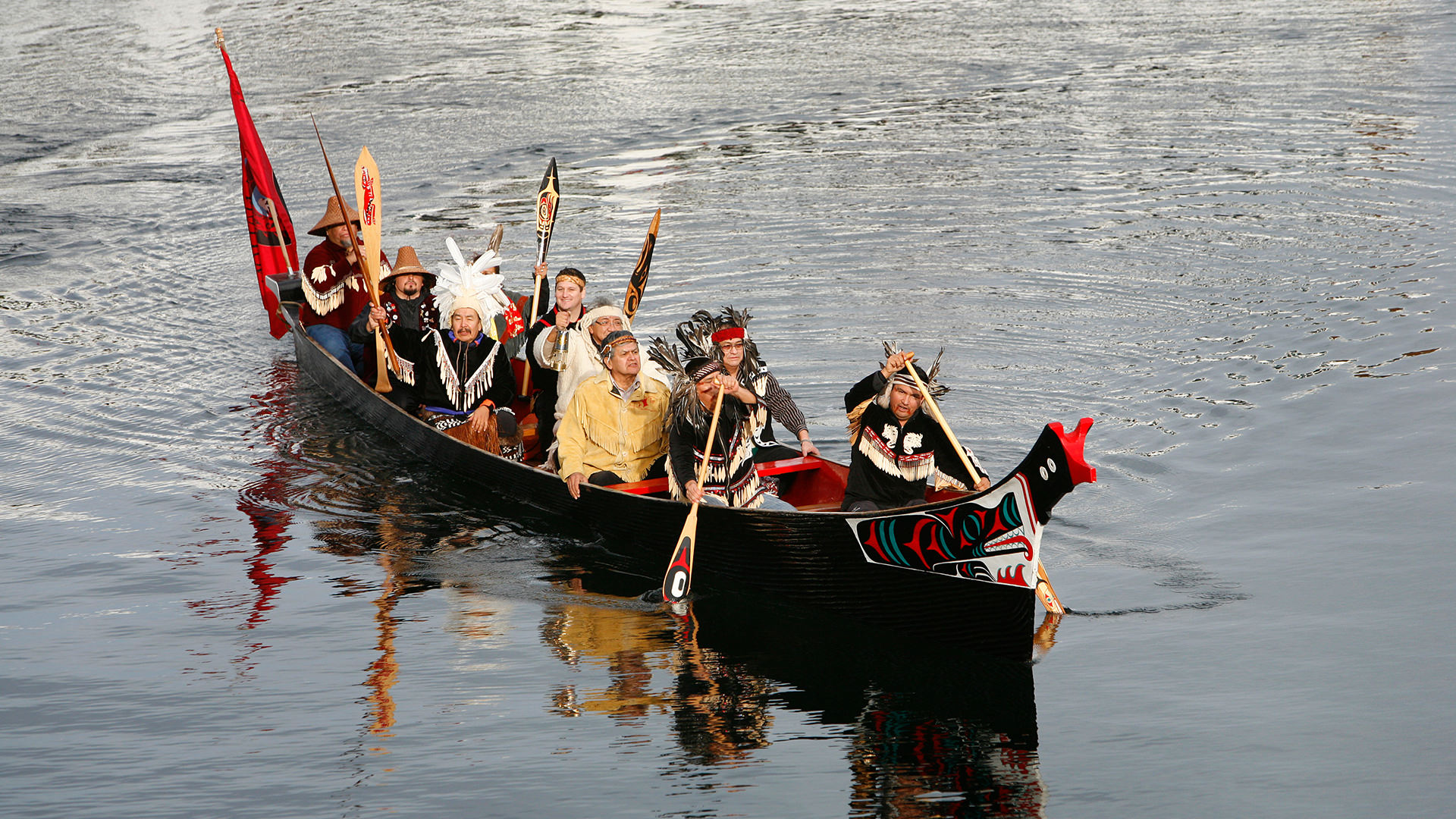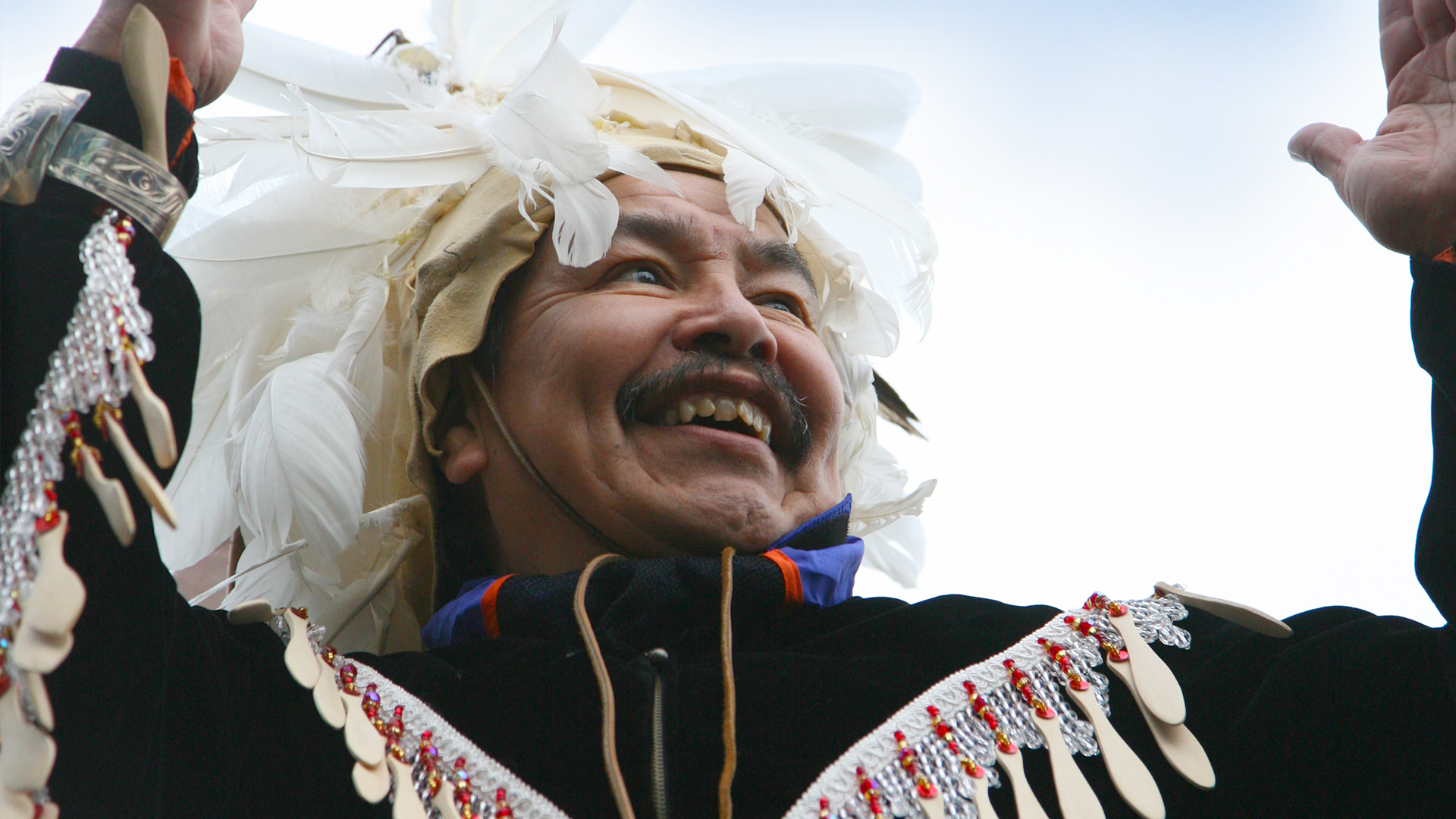Explore Greater.
Victoria is a true one-of-a-kind land on the Pacific coast. Sign up to have travel guides, upcoming events, travel tips, and more delivered to your inbox.
Destination Greater Victoria is honoured to be based on the traditional territory of the Lekwungen-speaking and W̱SÁNEĆ peoples, whose historical relationships with the land continue to this day.
Indigenous Peoples heritage and legacies live on in Victoria and Vancouver Island through ceremonies, potlatches, dances, art and masks. An Indigenous experience is an enriching and engaging addition to any Victoria visit.

The Songhees, Esquimalt, WSANEC, Tsartlip, Tseycum, Pauquachin, Scia'new, Tsawout and T'Sou-ke Nations are all important bands that have long called Southeastern Vancouver Island home.
Prior to European arrival in the late 18th Century, a Songees fortified village existed at Finlayson Point in Beacon Hill Park. After the establishment of Fort Victoria in 1854, the village was moved across the harbour into what is now Victoria West. Currently the Songhees and Esquimalt Nations reserves lie at the Southwestern edge of Victoria, bordering each other and the Town of View Royal. With their traditional lands lying northwest of Victoria, reserves of the T'Souke and Scia'new bands lie along the Sooke Basin while the Tseycum, Tsartlip, Tsawout and Pauquachin bands are located east of Victoria along the Saanich Peninsula.
Indigenous masks depict different symbols used in the stories of a tribe. The masks carved for a tribe are used for ceremonial purposes. The most common symbols on masks and totems are the Thunderbird, killer whale, frog, salmon, beaver, bear, wolf, raven, sun and moon.

The nahnum (fire circle) is a gathering place where stories and teachings are shared. The circular seating and fire are traditions that started in tribes' winter homes, where members of all generations would sit and talk with elders. More formal gatherings are held to discuss business matters. During those meetings, a talking stick is used to indicate which person will speak. Gatherings are still practised today, although they may not be around a fire.
The potlach is a sacred ceremony and the societal underpinning of Indigenous culture. Through this ceremony, Indigenous Peoples unite families in marriage, name children, right wrongs, pass on rights and responsibilities to the next generation and share wealth. From 1884 to 1951, the potlach was outlawed by the Canadian government as part of an attempt to destroy Indigenous culture and force the assimilation of its people. Masks and regalia were confiscated, and priceless historical treasures were destroyed. Only in recent years have the traditions come to life once again, through the memories of elders and the efforts of present-day Indigenous Peoples.
A powwow is a celebration of Indigenous culture that features traditional dance, music, food and regalia. As both ceremonial and social events, powwows hold a spiritual significance and continue customs passed through generations. Today, Powwows are often public gatherings that welcome people from all communities as a way to celebrate and share cultural traditions.
Indigenous culture is based on oral history and elders are responsible for sharing the stories of the ancestors. Elders are the history keepers, an important role for a culture that traditionally had no written history. Indigenous Peoples are keenly aware that, as times change, they could lose stories about their history. Now, with permission, storytelling gatherings are recorded for archival purposes.

The Lekwungen-speaking Peoples of Victoria were not a totem pole people themselves. The Lekwungen-speaking peoples traditionally carved house posts and welcome posts. Totem poles were carved by Northern and Interior Indigenous bands of British Columbia. As the capital of British Columbia, Victoria gratefully plays host to the artwork and carvings of several Indigenous bands and carvers from across the province, including totem poles.
A totem is defined as an object, such as an animal or plant that serves as the emblem or symbol of a kinship group or person. Indigenous cultures carve wooden poles to display these totems. Each animal carved represents a creature associated with family history, notable ancestors or events which displayed the ancestors' spiritual powers or magical privileges of the families.
Each different totem belongs to the particular family or person carving it. In other words, the carver cannot use totems belonging to families beyond their own. A collection of totem poles from Indigenous communities throughout British Columbia can be found in Thunderbird Park, at the Royal British Columbia Museum in Victoria. Beacon Hill Park is home to one of the world's tallest, free-standing totem poles carved from a single log. Alert Bay on Northern Vancouver Island is home to the tallest totem pole in the world, at 53 metres (two parts) and features 22 figures. Binoculars are required to see the top.

Experiencing Indigenous culture is an eye-opening part of every Victoria, BC visit. With Coast Salish murals decorating downtown architecture, historic and modern totem poles standing tall throughout our city, and Indigenous businesses scattered throughout – we have a strong First Nations presence that we are very proud of. In Victoria, we are honoured and grateful to be working, playing, and learning together on the traditional territories of the Lekwungen-speaking Coast Salish peoples, whose relationships with the land continue to shape our region today.

